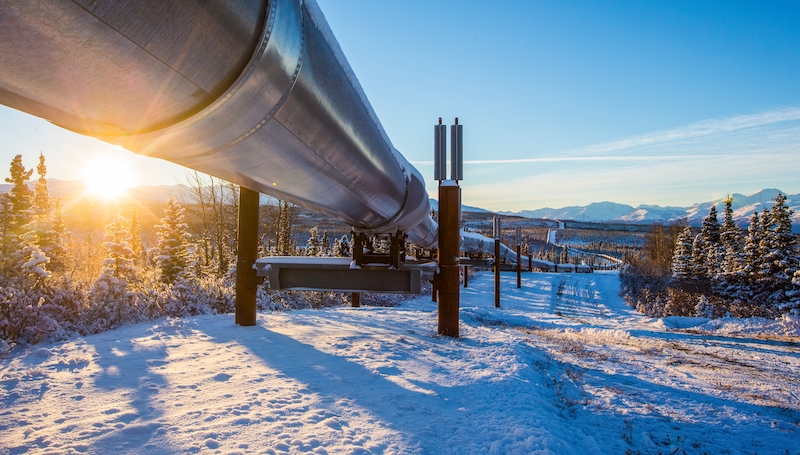Thawing Permafrost Could Threaten Sections of Trans Alaska Pipeline’s Foundation
(P&GJ) — The Trans-Alaska Pipeline is in danger due to thawing permafrost that supports an elevated section of the pipeline, NBC news reported.

The 800-mile, 48-inch interstate oil pipeline is one of the biggest in the world. It can transport 2,200 bpd, rungs from the Prudhoe Bay to the Valdez Marine Terminal, where oil is loaded onto tankers for shipment to market, and about 420 miles of the pipeline is elevated on 78,000 vertical support members due to permafrost, according to Global Energy Infrastructure data.
Michelle Egan, a spokeswoman for Alyeska Pipeline Service Co., an association of oil companies that operates the pipeline, declined to comment on a thawing slope of permafrost where an 810-foot section of the pipeline is secured, but told NBC news that “permafrost changes were anticipated during the original design.”
The thawing is causing some braces holding up the pipeline to twist and bend, NBC reported, and in response, the Alaska Department of Natural Resources approved the use of about 100 thermosyphons — tubes that suck heat out of permafrost — to keep the frozen slope in place and prevent further damage.
Alyeska sought permission in February 2020 to install the thermosyphons and confirmed that thawing permafrost posed a threat, NBC said.
During the “last few decades,” permafrost temperatures have warmed about 3.5 degrees Fahrenheit, and Alaska’s temperature is projected to increase 2 to 4 degrees by the middle of the century, according to the NBC report. Nature Climate Change journal projects 1.5 million square miles of permafrost could be lost to thawing for every 2 degree temperature increase.
Related News
Related News

- Keystone Oil Pipeline Resumes Operations After Temporary Shutdown
- Biden Administration Buys Oil for Emergency Reserve Above Target Price
- Freeport LNG Plant Runs Near Zero Consumption for Fifth Day
- Enbridge to Invest $500 Million in Pipeline Assets, Including Expansion of 850-Mile Gray Oak Pipeline
- Williams Delays Louisiana Pipeline Project Amid Dispute with Competitor Energy Transfer
- Evacuation Technologies to Reduce Methane Releases During Pigging
- Editor’s Notebook: Nord Stream’s $20 Billion Question
- Enbridge Receives Approval to Begin Service on Louisiana Venice Gas Pipeline Project
- Russian LNG Unfazed By U.S. Sanctions
- Biden Administration Buys Oil for Emergency Reserve Above Target Price




Comments